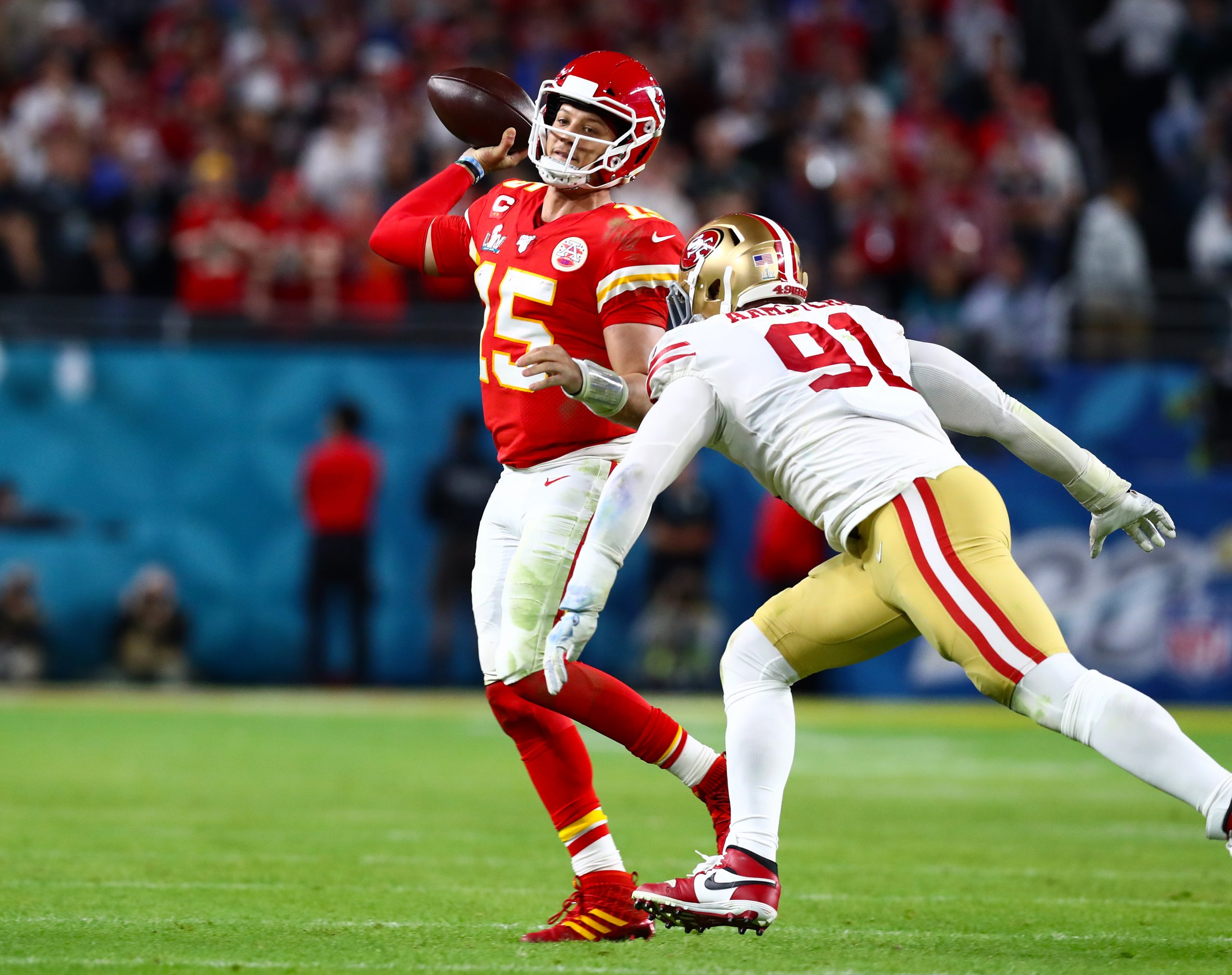
There may not be a bigger challenge in the NFL than stopping Chiefs quarterback Patrick Mahomes in the playoffs. The 49ers experienced this firsthand in Super Bowl LIV when Mahomes led a furious comeback that turned a 20-10 Chiefs deficit in the fourth quarter into a 31-20 Chiefs win. Unfortunately for San Francisco, their tape from Mahomes’ performance the last time they faced him in the Super Bowl isn’t likely to be very informative on slowing him down. Not only is Mahomes still dominant, he’s doing it in a dramatically different way than he did five seasons ago.
In 2019 the Chiefs were an electric, explosive deep passing game. Mahomes’ average depth of target was 8.5 yards per Pro Football Focus. He threw deep on 12.2 percent of his throws and had 15 touchdowns with just three interceptions on tosses 20-plus yards downfield. He was also prolific in the intermediate area with 20.5 percent of his throws coming between 10 and 19 yards beyond the line of scrimmage. There was still plenty of short game though with a combined 59.4 percent of his tosses coming either behind the line of scrimmage or within 9 yards of it.
Mahomes had prime Tyreek Hill and prime Travis Kelce running around wreaking havoc, and the Chiefs offense stretched defenses in ways that were nigh impossible to stop for 60 minutes. Eventually the dam was going to break.
Now Hill is gone and Kelce is in the twilight of his prime, albeit still outstanding. Kansas City has relied on a patchwork receiving corps that features rookie Rashee Rice, Justin Watson, retread Mecole Hardman and veteran Marquez Valdez-Scantling. There’s also the erratic Kadarius Toney whose absence from the lineup may or may not be a net positive for Kansas City.
Instead of pigeonholing an unproven group of pass catchers into roles to fit a dynamic downfield passing game, Mahomes and head coach Andy Reid have reeled the passing game in. They now rely on Mahomes’ ability to process and extend plays to maximize a passing attack that requires more of its quarterback.
Explosive plays are still there, but Mahomes is much more likely to take a checkdown or short throw than he used to be.
In 2023 his ADOT plummeted to 6.9 yards. That’s tied for 38th out of 44 qualified quarterbacks. His deep throw rate dropped to 10.3 percent, and he tossed just two touchdowns with six interceptions on those throws. Mahomes this season has targeted the intermediate area just 17.7 percent of the time, and he’s in the short area on 40 percent of his tosses.
Those numbers are all down compared to 2019 to varying degrees, with a huge uptick coming on throws behind the line of scrimmage. In 2019 just 17.8 percent of his throws were behind the line. That number skyrocketed to 23.1 percent this season. He threw 112 (!) screen passes this year according to PFF, compared to just 66 five years ago.
So, what does this mean for the 49ers?
After having to defend a heavily vertical attack in Super Bowl LIV, San Francisco will now see a more compact Chiefs passing game. That doesn’t mean it’s less effective, and it doesn’t mean Mahomes isn’t capable of making throws down the field. It’s just a bigger question mark now as to whether the receiver is going to catch it.
In order to “stop” Mahomes now, the 49ers won’t need to contain vertical routes, they’ll need to tackle. Letting Mahomes scramble or letting pass catchers run after short throws is how Kansas City will generate chunk plays. Tackling has been a huge issue at times for San Francisco this season (they missed 150 this season). If they can do it effectively in the Super Bowl though, they’ll have a real chance of slowing down this new version of the Chiefs’ passing game and avenging their loss to Mahomes four years ago.
